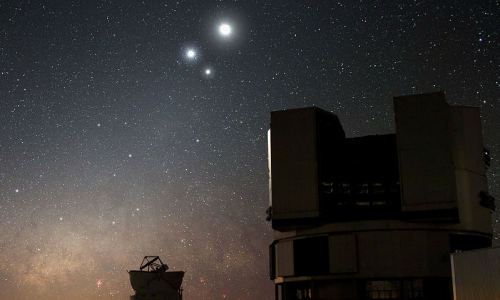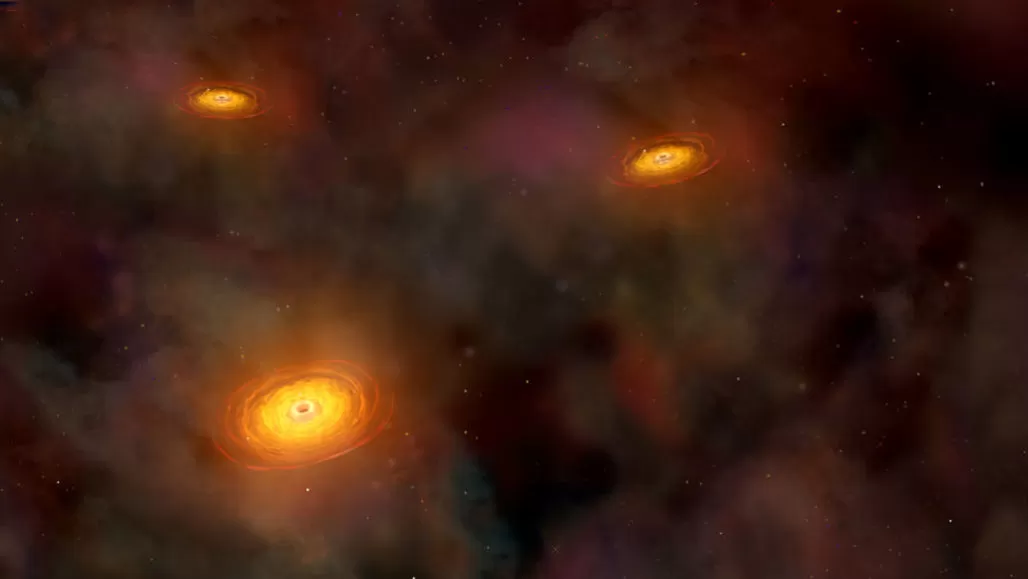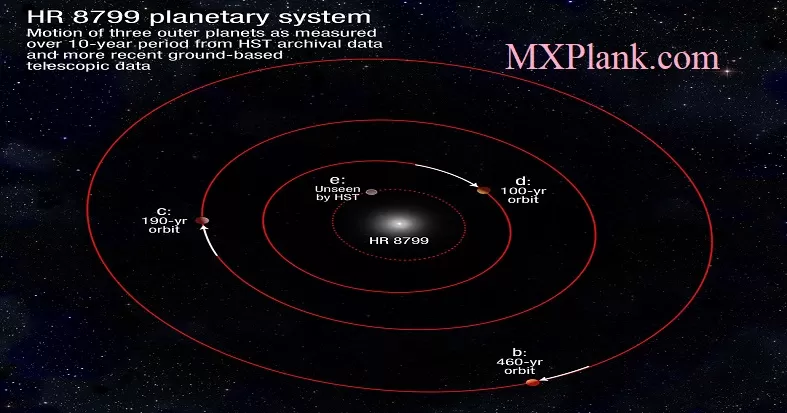Appulse

The Moon in conjunction with Venus and Jupiter, with the Very Large Telescope in the foreground. Image © Y. Beletsky, 2009.
An appulse is when two or more astronomical objects – usually the planets or the Moon – appear close to one another in the sky.
Since the Moon moves relatively quickly across the sky, making a complete circuit through the constellations every month, most appulses occur when the Moon passes another body. These tend to recur on a monthly basis, as the Moon passes the same planets at a similar point in its cycle of phases each month.
There is no formal definition of how close two objects need to become for their
close encounter to qualify as an appulse.
On MXPlank.com, we list all appulses where planets or minor planets pass within one degree of each other.
For naked-eye objects, we include appulses out to three degrees, and for
particularly bright naked-eye objects, out to five degrees.
Occasionally very close appulses may result in one object passing in front of another – an event called an occultation. Most such events involve the Moon, simply because the Moon traverses such a large area of the sky each month.
Appulses vs conjunctions
In common parlance, close groupings of objects are often called conjunctions but this term has a rather more technical meaning, referring to when two objects share the same right ascension.
Credit:
NASA/ESA






